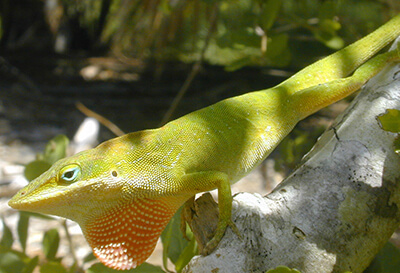Lizards in the Landscape

Florida-Friendly Landscaping™ in a Minute
Episode Archive
Episode #173 | Original Air Date: October 28, 2020
Related Resources
Transcript
Whether running up a tree trunk or sunning on a patio wall, those green and brown lizards are everywhere in our Florida landscapes.
Our most common native species is the green anole, which is usually bright green, but can quickly turn itself brown and then back to green, which is why it is sometimes also called, although inaccurately, a chameleon.
But not all our commonly seen brown lizards are the color-flipping green anoles. The similar looking brown anole always stays brown and is an introduced invasive Cuban cousin of our native green anole.
Whatever their color though, hungry lizards eat many nuisance insects and are thus beneficial in our landscapes.
Florida-Friendly Landscaping™ in a Minute is a production of the University of Florida’s Florida-Friendly Landscaping™ Program, IFAS Extension, and WUFT-FM in cooperation with the Florida Department of Environmental Protection.

